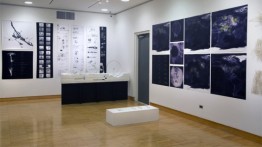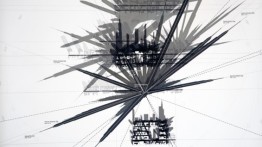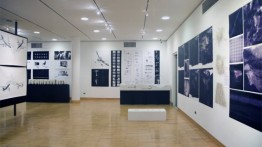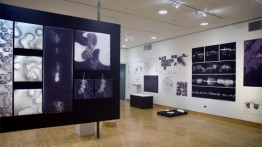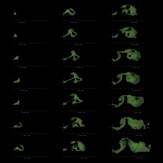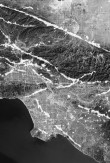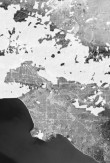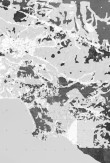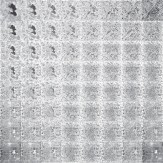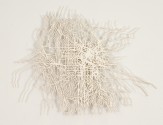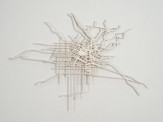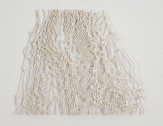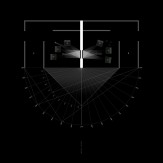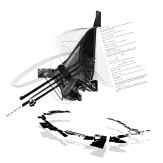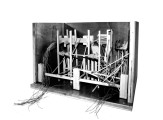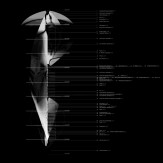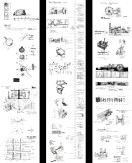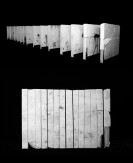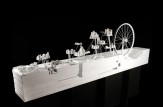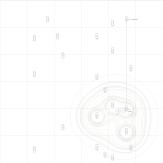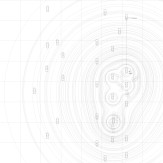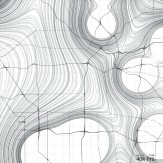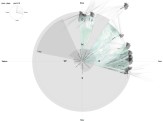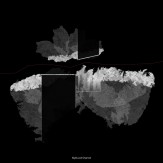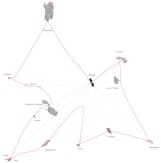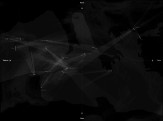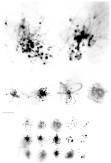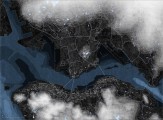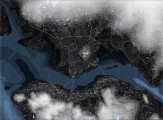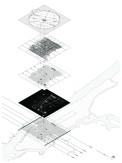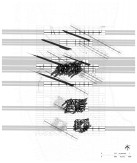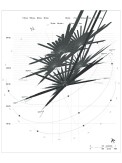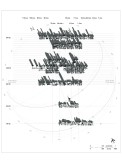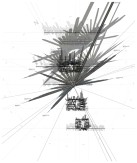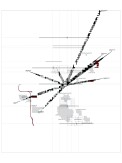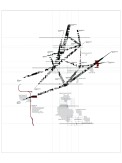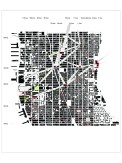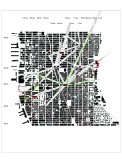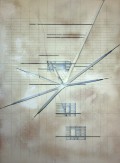Master of Architecture II Thesis 2011
Professor: Diana Agrest
This is a critical moment for the re-thinking of the object of architecture with a critical approach to architectural discourse, questioning the very boundaries of Architecture itself. The work produced in the Advanced Design Studio, while exploring specific problems, addresses simultaneously the question of the place and relevance of the problem in architectural discourse.
Without prescribed boundaries, the projects address a myriad of critical issues affecting architectural discourse, ranging from urban theory to the present condition of globalization and the continual emergence of new scientific developments and technologies. The thesis projects draw from the graduate students’ year-long exhaustive research using texts, photography, drawing, technology, science and history to develop innovative programs, all of which feature configurations and narratives that bring forth potential solutions which, at first, not be obvious to the viewer.
< Back to Selected Graduate Design Studio Projects
VIEW INDIVIDUAL PROJECTS BELOW
Projects
-
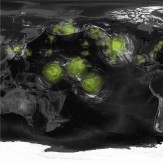
Extraterritoriality Nexus
-

On Section
-

Urban Energetics
-

An Aeolian Sense
-
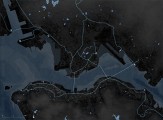
Strange Co-operation
-

The Void in Manhattan
Back
Extraterritoriality Nexus
Extraterritoriality Nexus
A new genealogy: Investigations on the city through redefining extraterritoriality in the context of Ecology
Melanie Fessel
We no longer map territories, but territories map us. Our inscription upon the Earthʼs surface is being mapped upon the territory and therefore changes due to human impact are exceeding the planet’s capacity to sustain us. Extraterritoriality, in many ways, is used as a political tool to subscribe order over the unrecognized. The context of extraterritoriality is not given, it has to be created – implanting the notion of exception and encouraging the creation of a broader, interdisciplinary context in the creation of a true ecological spectacle. A constitutive mobility. An elusive implication.
The initial focus my explorations were large global environmental catastrophes that have impacted the world’s fragile ecosystem. The radioactive fallout in Fukushima, Japan as the most recent catastrophe marks the only true long-term marker of human presence on Earth: weaponized geology - minerals made altogether unearthly, post-terrestrial, through anthropological intervention. The obliterative power of nuclear weapons turns them into a ubiquitous anti-landscape, something that no geography - built or natural - can resist. We tend to measure threats against our cities in terms of gang violence or moments of staged terrorist assaults. Hovering over all of this is still the apocalyptic thought of something that could simply annihilate cities altogether. If we are to study cities, we should also study that which is radically anti-city.
The nexus for my investigation on extraterritoriality is the City of Los Angeles. Due to its magnificent and rich, yet dangerous and unpredictably wild atmosphere, the city became the departure for explorations in a socio-ecological context. Los Angeles is the disaster capital of the world and Hollywood, as its center of media and speculation of the American value system, is also raising awareness about the aftermath.
The notion of unstable processes and mutated landscapes are conditions that will become part of our future. The order of the existing is being confronted by the order of the new and speculates on new emergent landscapes of emergency.
On Section
On Section: Reading and Constructing Through Section
Aikaterini Olga Kefalogianni
The section is the research tool that reveals the invisible. This Thesis proposes to investigate this dimension as a means to penetrate a space, an event or an object in order to comprehend and transform “naturally” assumed viewpoints. The initial focus of this exploration was a series of films, where section has an essential role as a medium between the “real” and the “fictional.”
Urban Energetics
Urban Energetics
Jonathan Heckert
The city's many and diverse energy forces are bound into a constantly changing complex social and physical form. It is these energies that act upon the city as a radical charge, mutating the urban landscape into new potential configurations. Using the traced spaces of human occupation as a generative force that defines the dynamic transfer of energy, potential energies and infrastructures were proposed as defining forces for the new city.
An Aeolian Sense
An Aeolian Sense
Katerina Kourkoula
Sand dunes are a visual manifestation of wind forces – a constantly vibrating field of sand grains created by wind molding. The Odyssey is a journey negotiated through God-controlled winds, in which the return of Odysseus is expedited or obstructed depending on wind directions. This thesis is an exploration of the possible modes in which Architecture can engage and interact with the invisible force field of wind, which is in constant flux in its interaction with water and land. The Odyssey may be read as the relationship between natural forces and those of ideology and politics.
Strange Co-operation
Strange Co-operation: Beneath Hong Kong
Wei-Che Yu
Based on the issue of water shortage in Hong Kong, this thesis focuses on developing a new urban water system into this high-density city through the reuse of rainwater. The site of my proposal is located on Hong Kong island, where the natural landscape meets the urban fabric.
By using the existing rainwater collection system of Hong Kong island, I proposed to gather water and relocate it into an enormous underground water tank beneath the city. There are two building types associated with this water reuse design. One is a horizontal urban pier along the coastline; the other is a vertical tower at the base of the mountain. An open water sidewalk connects these two types of buildings, making the entire system whole.
The Void in Manhattan
The Void in Manhattan
Youngsung Shin
The concept of void is the focus of this thesis. I began with an explorative analysis of the traditional Korean courtyard house as well as the city of Manhattan. Readings of Manhattan were generated through drawing and proposals were produced through a subsequent process of transformation.

